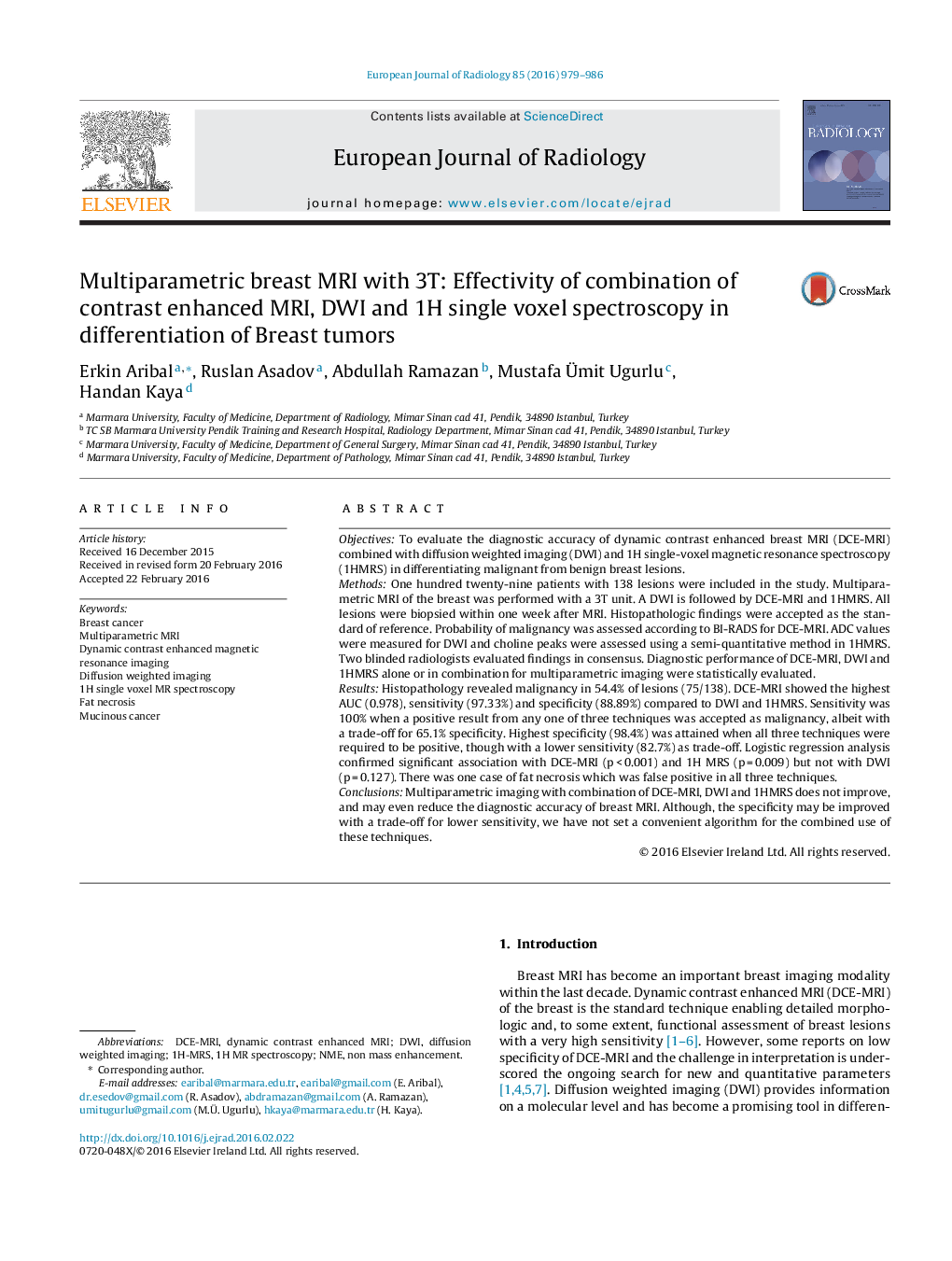| کد مقاله | کد نشریه | سال انتشار | مقاله انگلیسی | نسخه تمام متن |
|---|---|---|---|---|
| 4224980 | 1609742 | 2016 | 8 صفحه PDF | دانلود رایگان |

• Multiparametric MR imaging of breast provides more data with combination of dynamic contrast enhanced MRI, diffusion weighted imaging and 1H MR spectroscopy.
• Fat necrosis may show malignant features in all three techniques.
• Mucinous cancers may show negative findings in dynamic contrast enhanced MR and diffusion weighted imaging but high choline peak on spectroscopy.
• Multiparametric imaging can increase the specificity of breast MRI with a trade off for sensitivity.
ObjectivesTo evaluate the diagnostic accuracy of dynamic contrast enhanced breast MRI (DCE-MRI) combined with diffusion weighted imaging (DWI) and 1H single-voxel magnetic resonance spectroscopy (1HMRS) in differentiating malignant from benign breast lesions.MethodsOne hundred twenty-nine patients with 138 lesions were included in the study. Multiparametric MRI of the breast was performed with a 3T unit. A DWI is followed by DCE-MRI and 1HMRS. All lesions were biopsied within one week after MRI. Histopathologic findings were accepted as the standard of reference. Probability of malignancy was assessed according to BI-RADS for DCE-MRI. ADC values were measured for DWI and choline peaks were assessed using a semi-quantitative method in 1HMRS. Two blinded radiologists evaluated findings in consensus. Diagnostic performance of DCE-MRI, DWI and 1HMRS alone or in combination for multiparametric imaging were statistically evaluated.ResultsHistopathology revealed malignancy in 54.4% of lesions (75/138). DCE-MRI showed the highest AUC (0.978), sensitivity (97.33%) and specificity (88.89%) compared to DWI and 1HMRS. Sensitivity was 100% when a positive result from any one of three techniques was accepted as malignancy, albeit with a trade-off for 65.1% specificity. Highest specificity (98.4%) was attained when all three techniques were required to be positive, though with a lower sensitivity (82.7%) as trade-off. Logistic regression analysis confirmed significant association with DCE-MRI (p < 0.001) and 1H MRS (p = 0.009) but not with DWI (p = 0.127). There was one case of fat necrosis which was false positive in all three techniques.ConclusionsMultiparametric imaging with combination of DCE-MRI, DWI and 1HMRS does not improve, and may even reduce the diagnostic accuracy of breast MRI. Although, the specificity may be improved with a trade-off for lower sensitivity, we have not set a convenient algorithm for the combined use of these techniques.
Journal: European Journal of Radiology - Volume 85, Issue 5, May 2016, Pages 979–986